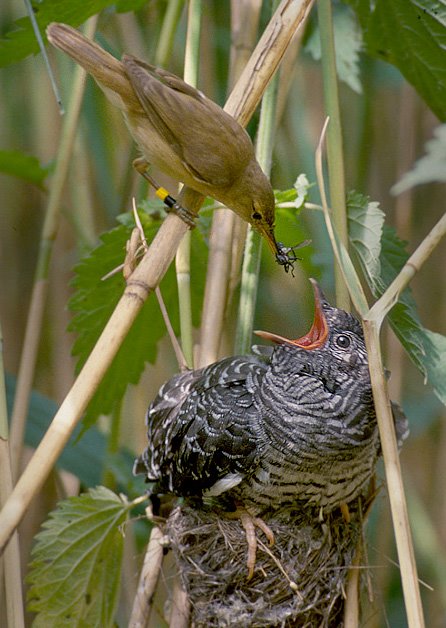What is mimicry?
In nature, competition for living space is fierce and the dangers are many. To protect themselves, animals and plants sometimes use what is known as mimicry. This means that they mimic the appearance or behaviour of dangerous, venomous or poisonous species to scare off predators and avoid being eaten.
Mimicry is common in nature and can occur in many different ways. There are two types of mimicry, called ”defensive” and ”aggressive”. Defensive mimicry is about protecting the animal from being eaten. Aggressive mimicry is more unusual, and involves mimicking something harmless to get closer to prey.
Different sorts of hoverflies, all looking like bees or wasps.
Photo: Alvesgaspar-CC-BY-SA
A hoverfly mimicking a bumblebee.
Photo: Bruce-Marlin-CC-BY-SA
This hoverfly not only mimics a wasp with its colours, but also uses its front legs to imitate a wasp's antennae.
Photo: Bruce-Marlin-CC-BY-SA
This photo shows a common wasp. It has thick antennae which hoverflies lack, but some hoverflies mimic with their front legs.
Photo: Bruce-Marlin-CC-BY-SA
Hover flies resemble wasps
An example of defensive mimicry can be seen in the hover fly. The hover fly is a common insect in Sweden and there are many different kinds of hover flies. While a harmless nectar- and pollen-eating insect, the hover fly mimics the appearance of the venomous and dangerous wasp to deceive predators that might otherwise eat them. The black and yellow stripes of the hover fly resemble those of the wasp with the same colours. Some hover flies are a little hairier and look more like bumblebees.
The milk snake, which lives in North and South America, mimics the appearance of venomous coral snakes to escape enemies. But mimicking another species too well can be dangerous and counterproductive. Sometimes people kill both milk snakes and hover flies because they resemble the dangerous originals.
The milk snake is harmless to people, yet humans kill many milk snakes out of fear every year. That's because it closely resembles...
Photo: Johanna-Rylander-Malmö-Museer
...the colours of multiple venomous species of coral snakes, like this Brown's coral snake.
Photo: Daniel-Pineda-Vera-CC-BY
The mimic octopus is a species able to mimic many different dangerous sea animals, like lionfish, sea snakes and venomous rays.
Photo: Silke-Baron-CC-BY
Spiders with scent like mosquitoes
Aggressive mimicry can also look different. Predators may mimic their prey to get closer to their prey. There are spiders that release scents (pheromones) that mimic the scents of female mosquitoes that are ready to mate. The spider attracts male mosquitoes, which are eaten when they come to mate.
This spider mimics the flower it sits on, to trick pollinating insects into coming close. The spider then eats the insect.
Photo: Ton-Rulkens-CC-BY-SA
A small fish that uses both its colours and movement to mimic a cleaner fish. But instead of grooming fish that come close, it takes a small bite of the fish!
Photo: Jenny-Huang-CC-BY
Cuckoo eggs in nests of other birds
There are species that parasitise another species by laying eggs in their nests. Either to let the other species raise their young or to let the other species become food for their own newly hatched young. This is another form of aggressive mimicry.
Cuckoos lay their eggs in the nests of other birds. Cuckoo eggs are quite small and resemble the eggs of other birds. When the cuckoo chick hatches, it pushes the other chicks out and is left alone in the nest. There it gets all the food it needs – from the bird parents of the other species.

Photo: Per-Harald-Olsen-CC-BY-SA